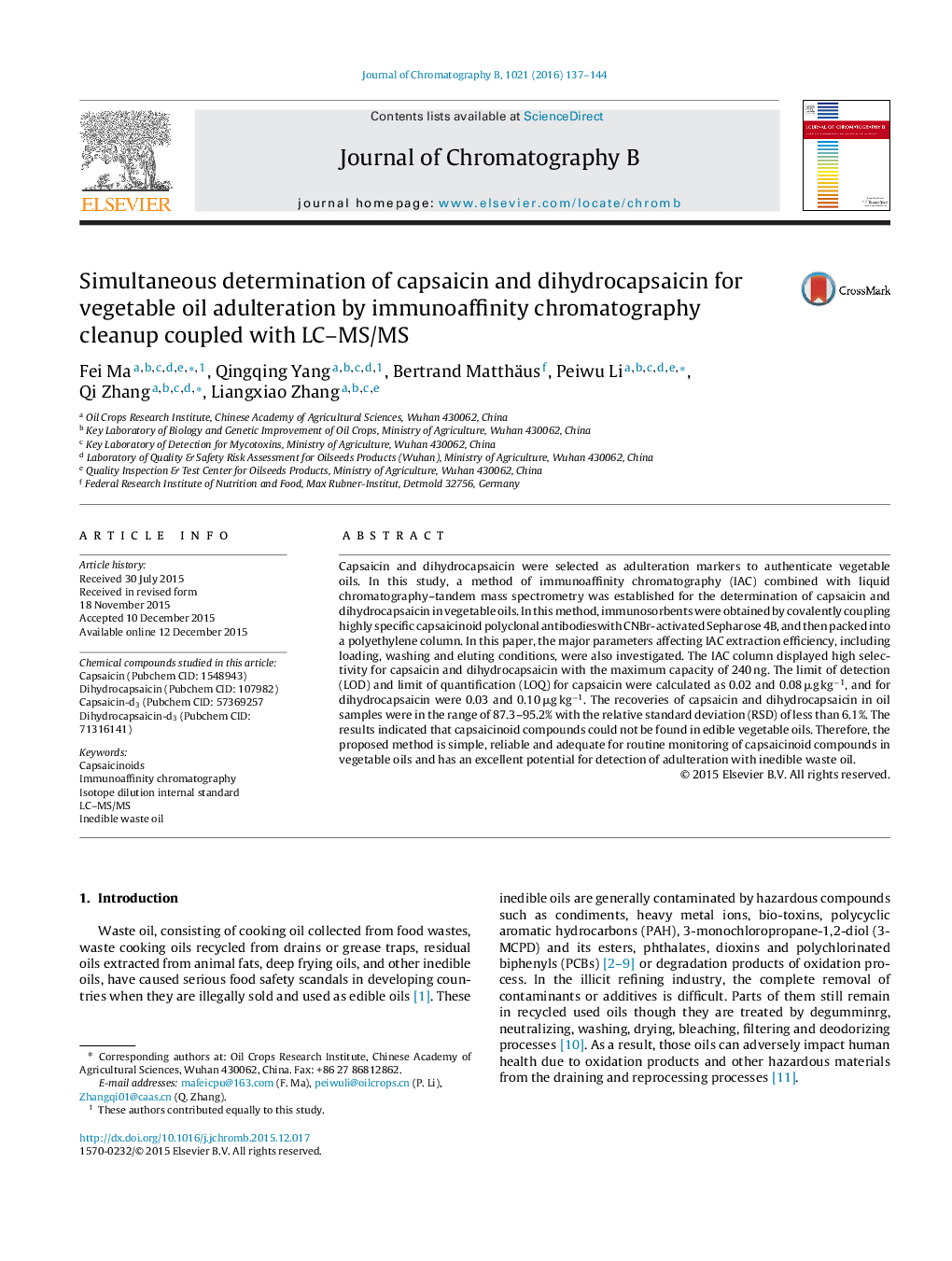| Article ID | Journal | Published Year | Pages | File Type |
|---|---|---|---|---|
| 1211943 | Journal of Chromatography B | 2016 | 8 Pages |
•The IAC column for selective extraction of capsaicinoids from oil was developed.•The major parameters affecting IAC extraction efficiency were optimized.•The IAC column was characterized including binding capacity, accuracy, etc.•Accurate quantification was performed with deuterium-labeled internal standards.•Capsaicinoids in spiked oil was extracted by IAC column and analysed by LC–MS/MS.
Capsaicin and dihydrocapsaicin were selected as adulteration markers to authenticate vegetable oils. In this study, a method of immunoaffinity chromatography (IAC) combined with liquid chromatography–tandem mass spectrometry was established for the determination of capsaicin and dihydrocapsaicin in vegetable oils. In this method, immunosorbents were obtained by covalently coupling highly specific capsaicinoid polyclonal antibodieswith CNBr-activated Sepharose 4B, and then packed into a polyethylene column. In this paper, the major parameters affecting IAC extraction efficiency, including loading, washing and eluting conditions, were also investigated. The IAC column displayed high selectivity for capsaicin and dihydrocapsaicin with the maximum capacity of 240 ng. The limit of detection (LOD) and limit of quantification (LOQ) for capsaicin were calculated as 0.02 and 0.08 μg kg−1, and for dihydrocapsaicin were 0.03 and 0.10 μg kg−1. The recoveries of capsaicin and dihydrocapsaicin in oil samples were in the range of 87.3–95.2% with the relative standard deviation (RSD) of less than 6.1%. The results indicated that capsaicinoid compounds could not be found in edible vegetable oils. Therefore, the proposed method is simple, reliable and adequate for routine monitoring of capsaicinoid compounds in vegetable oils and has an excellent potential for detection of adulteration with inedible waste oil.
